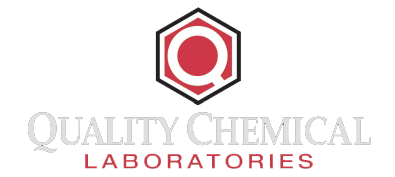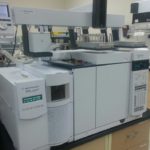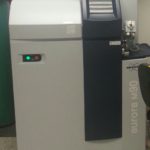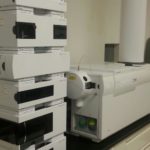Mass Spectrometry
Quality Chemical Laboratories is home of the latest in liquid chromatography interfaced mass spectrometry (LC-MS) technologies.
Range of Applications of LC MS Technology
Drug Products
- Degradation product identification and profiling.
- Drug-excipient interaction studies.
- Deformulation of drug products.
- Identification of packaging extractables and leachables.
- Peak purity verifications for validation of analytical stability-indicating HPLC methods.
Manufacturing
- Identification of unknown impurities arising from manufacturing processes.
- Identification and quantification of residue on equipment surfaces (i.e. surfactants, excipients, APIs).
Synthesis
- Reaction monitoring.
- Reaction mechanism elucidation by isotopic labeling.
- Identification and characterization of reaction intermediates and by-products.
- Process impurity identifications.
Raw Materials
- Lot-Lot and Vendor-Vendor Active Pharmaceutical Ingredient (API) and excipient impurity comparisons.
- Structural hit list screening for potent impurities (i.e. melamine, alkylating agents).
- Polymeric material characterization.
Other
- Patent litigation support
Equipment
Agilent 6210 Time-of-Flight (TOF) High Resolution Mass Spectrometer interfaced to an Agilent 1200 HPLC via electrospray ionization (ESI).
TOF
Time-of-Flight technology delivers mass resolution and mass accuracy without sacrificing data acquisition speed, dynamic range, mass range, or sensitivity. You get the speed you need to take full advantage of today’s ultra-fast rapid resolution LC (RRLC) separations. The combination of RRLC separation coupled with accurate mass TOF technology offers the performance required for maximum information for complex samples while providing faster analyses of high-throughput workloads translating into faster sample turn around times.
TOF mass accuracy technology advantages:
- High mass accuracy allows determination of empirical formulas for detected ions.
- Typical mass accuracy within 2-ppm improves confidence and reduces false positives.
- Additional structural information available via fragmentation by collision induced dissociation (CID).
- Fast, scan-to-scan, polarity switching allows detection of both positive and negative ions in a single injection. (Beneficial for samples containing basic and acidic components).
- Resolves complex mixtures, distinguishing compounds of interest from interferences.
- Low-picogram on-column sensitivity allows detection of extremely low-level components even in the presence of vastly more abundant compounds. Ideal for identifying impurities in complex sample matrices.
Specifications
- Mass Range: m/z 50 – 12,000.
- Resolution: > 13,000
- Mass Accuracy: < 2 ppm
- Scan Speed: 20-40 scans/second
- Sensitivity: > 10:1 S/N for 10 pg Reserpine
Phil Toret
Lab Manager – RM/Chromatography (Technical Inquires)
phil.toret@qualitychemlabs.com
910-338-3190 (direct)
Cole Hudson
Business Manager
cole.hudson@qualitychemlabs.com
(910) 202-6627






